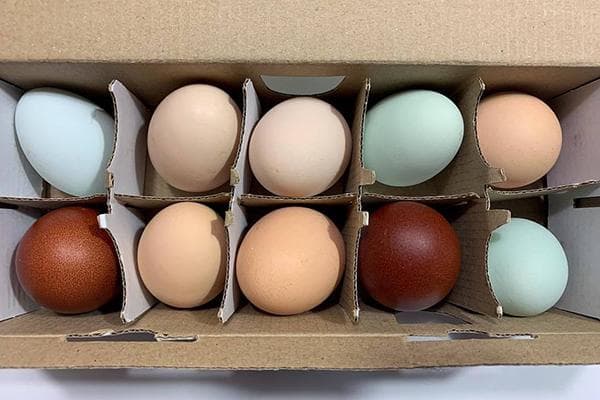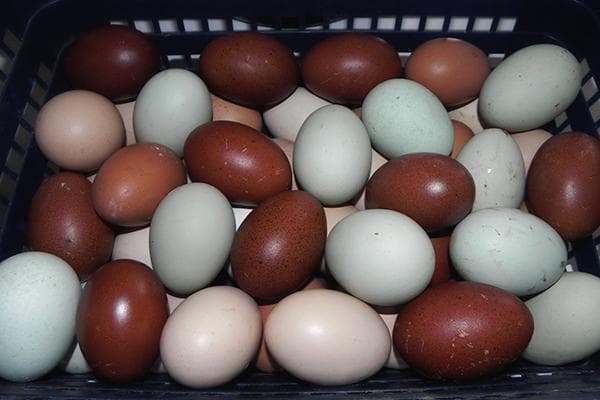Why do chicken eggs come in different colors and which ones are better to choose?
You've probably wondered more than once why chicken eggs are different colors. You may have even heard that brown shells come from domestic hens, and white shells come from “factory” birds. This is actually not true. We learned from experts how to explain the variety of colors from a scientific point of view - and are ready to share interesting information with readers.

What color are chicken eggs?
We are all accustomed to seeing eggs of two colors - white and brown. Moreover, brown comes in different shades, sometimes it is closer to cream or chocolate. There are also specks on the shell; there can be a lot of them or very few.
There are unusual breeds of chickens:
- Maran (their eggs are red-brown, as if colored by a decoction of onion skins);
- sin-sin-dian, lakedanzi, ukheiliyu (they surprise everyone with the green color of the shell);
- legbar, araucana (can lay blue, blue, turquoise eggs);
- Easter eggers (from which you get eggs in green, blue and pink shades).
What determines the color of the shell?
No matter how strange it may sound, genetically the shell can only have a blue color. It is provided by a dominant autosomal gene, which is usually denoted by the capital letter O. If such a gene is “switched off” in the chicken’s body, it lays white, in other words, colorless eggs.
Brown, green and pink are in fact also white or blue.They acquire their color by passing through the oviduct, where the corresponding pigment is released. Please note: only the outer part of the shell is painted, while the inner part retains its natural shade.
By crossing breeds of chickens that lay eggs of different colors, new variations can be obtained. The result of the crossing is easy to predict:
- blue + cream = green;
- blue + brown = olive;
- blue + red-brown = pink.
The color intensity depends on various factors:
- on the breed and, accordingly, on the amount of pigment produced by the body;
- from lighting in the chicken coop;
- from the feed consumed by the chicken;
- on the age of the bird (the younger the hen, the brighter the color of the shell);
- on ambient temperature;
- from the psycho-emotional state.
This explains why the same chicken can lay either brown or cream eggs at different times.
When buying eggs in a store or market, you should pay attention to their freshness and size. The color of the shell does not in any way affect the taste characteristics, the content of nutrients, or the risk of salmonellosis infection.


